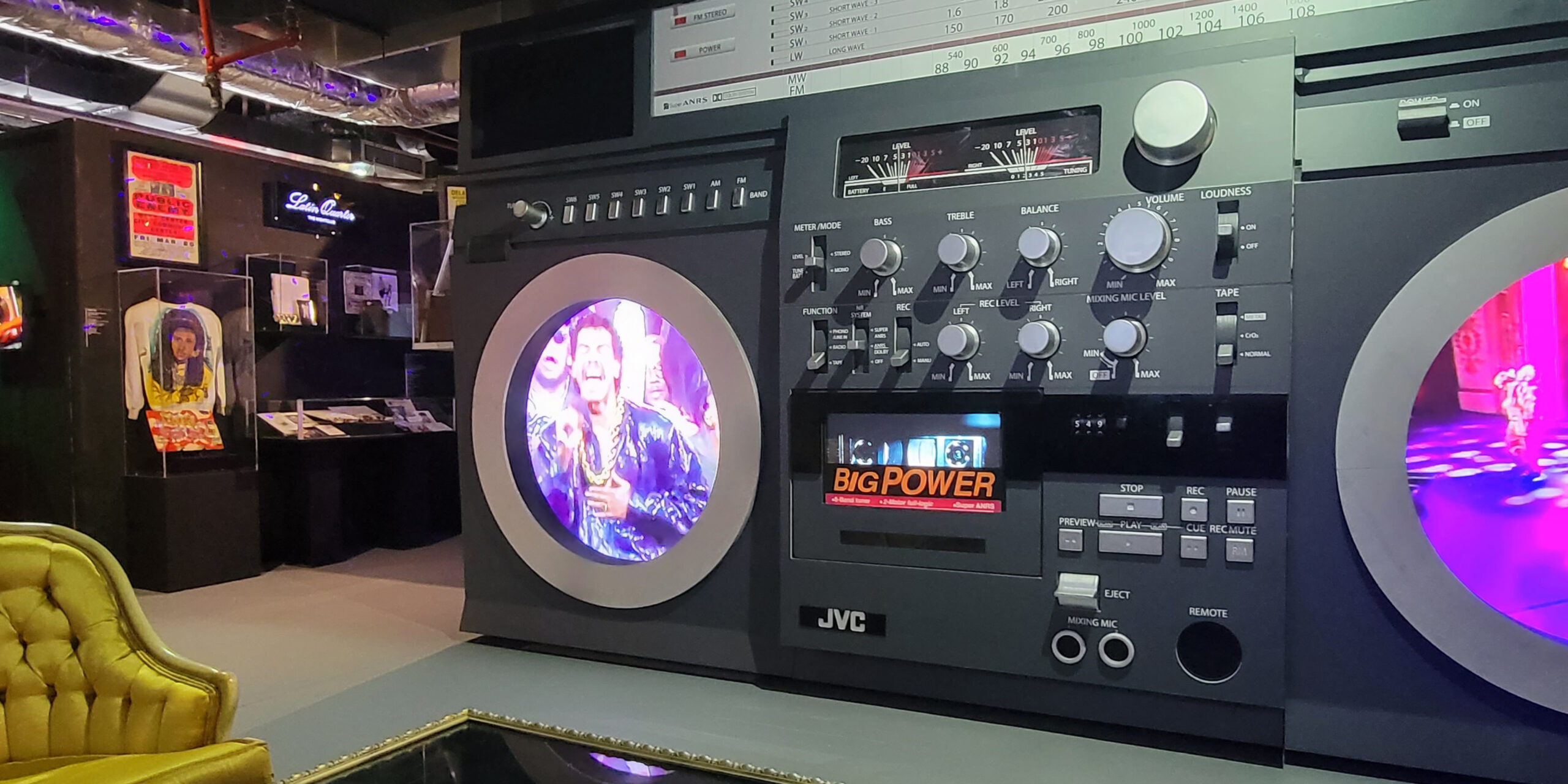“Hip-hop resembles the wants and needs of young Black America,” says Rocky Bucano, President of the Universal Hip Hop Museum.
Born in underground parties in the 1970s, hip-hop music has shaped many communities and sent cultural waves worldwide. Since 2017, it has been the most listened-to genre in the U.S., dominating the music industry. It has influenced elements of art and culture, from fashion to language and politics.
However, it was only in the past few years that a plan was put in place to preserve the history of the global phenomenon. Scheduled to open its doors in 2024 in hip-hop’s originating borough, the Bronx, the Universal Hip Hop Museum has curated an extensive hip-hop archive dating back to the genre’s creation. Rocky Bucano, aka Kool DJ Rock, conceptualized UHHM in 2011 and curated a team of prominent hip-hop figures as its founding members: Kurtis Blow, Ice T, LL Cool J, Nas, Afrika Bambaataa, and Grandmaster Melle Mel.
A temporary facility opened in June 2022, holding educational youth-based programs to teach new generations through immersive experiences and allowing students to explore roles in the music industry, from business planning to financial capabilities.
Below, Bucano speaks to Mission about his time as Pete DJ Jones’ protege, how hip-hop addresses poverty, drug use, and gang violence, and the museum’s educational ambitions.
Lizzy Zarrello: How did your love for hip-hop begin, and how has it driven your career?
Rocky Bucano: My career in music began in the mid-’70s as a teen protégé of Pete DJ Jones. Pete was New York City’s top mobile DJ from 1968 to 1982. He was the favorite of New York City’s Black party promoters. I was his understudy at age 15 and got my first opportunity to stand in for Pete at the Stardust Ballroom in the Bronx at age 16. My ascension and popularity as Kool DJ Rock happened fast. I began promoting my own parties in the Bronx and Manhattan and playing music at Park Jams when hip-hop was just emerging. Years later, I launched StrongCity Records with legendary DJ Jazzy Jay. StrongCity is one of the most iconic independent Rap Music labels of Hip Hop’s Golden Era circa 1986-1990. I have had the pleasure of working with great producers, musicians, and recording artists such as; Teddy Riley, Dallas Austin, La Reid, Baby Face, Masters Of Ceremony, Diamond D, Busy Bee, Blackstreet, and many others.
LZ: Why do you think hip-hop has become such a huge force in influencing our culture?
RB: Hip-hop resembles the wants and needs of young Black America and is the only art that constantly evolves with each generation. The poetic stories by groups such as Grandmaster Flash and the Furious Five in the ’70s and Kendrick Lamar of today’s generation speak of disadvantaged communities and the lack of socioeconomic resources to address poverty, drug use, gang violence, and racism – the issues remain the same. Hip hop’s ability to shine a bright light on the social conditions of hoods across the world keeps the art fresh.
LZ: How did the UHHM come about? What was the process behind creating the organization and breaking ground on the building?
RB: It began thirteen years ago as a proposal to build a permanent home for hip-hop at the Kingsbridge Armory which led to a partnership with L&M Development Partners to design and build hip-hop’s future home at the Bronx Point. During the 13-year journey, there were many challenges. Once the elected leaders of New York City and New York State understood the economic development impact that the Universal Hip Hop Museum would have on the Bronx, it quickly became one of the most important real estate projects in the state. When the museum broke ground in 2021, the dream became a reality.
LZ: Why do you think preserving artifacts and educating people on hip-hop history is important?
RB: Preserving hip-hop’s most treasured artifacts will allow future generations to learn how hip-hop became a culture that influenced every aspect of modern society, from fashion, entertainment, and politics, to cinema. Hip-hop culture’s entrepreneurial DNA afforded many people a way to escape poverty and build successful careers. We want to make sure people know what hip-hop is and its origin.
LZ: How has UHHM worked to preserve all elements of hip-hop, including graffiti, MCs, DJs, and breakdancing?
RB: The Mission of the UHHM is to preserve and celebrate every element of the Culture’s past and present. We do this through educational programs, immersive events and experiences, and by making the museum’s large collection accessible in the Metaverse. Our curators and I work very closely together to discuss the design and programming of each exhibit. Then we pull in the museum’s larger team to produce content to support the exhibit’s narrative and visitor experience.
LZ: As construction continues for UHHM’s home, what are your hopes for the future of UHHM?
RB: The Universal Hip Hop Museum will be one of the most important and innovative cultural institutions in the world. It will be another global destination for tourists to visit.
Homepage image courtesy of Openverse. Inside image courtesy of Rocky Bucano, the Dapper Dan Lounge by Collab NYC.





